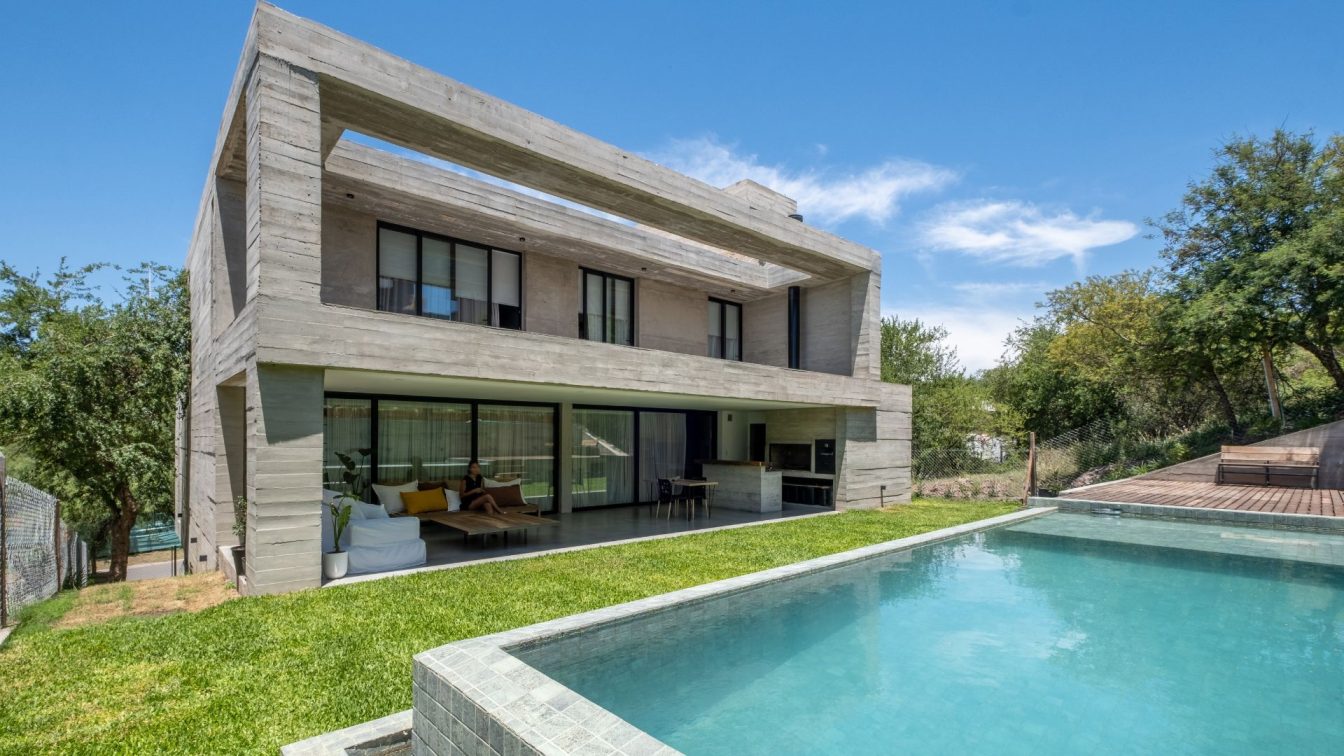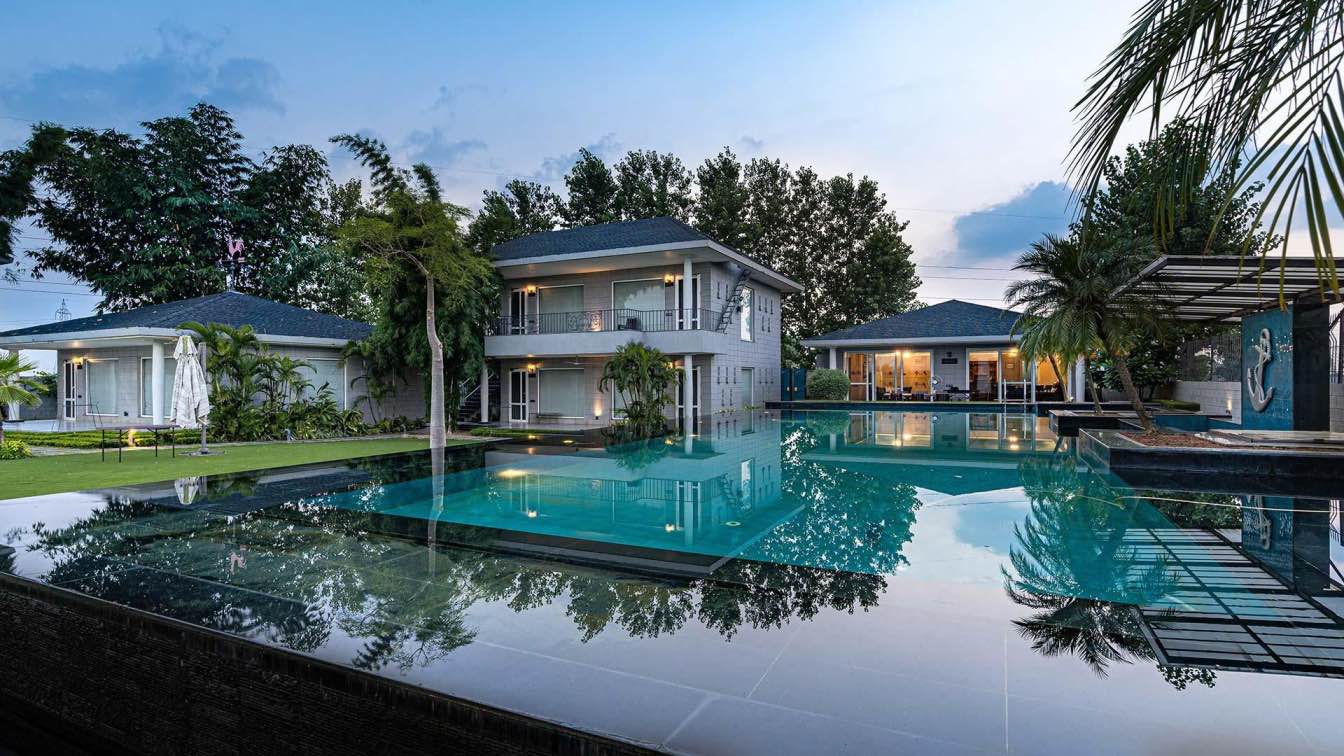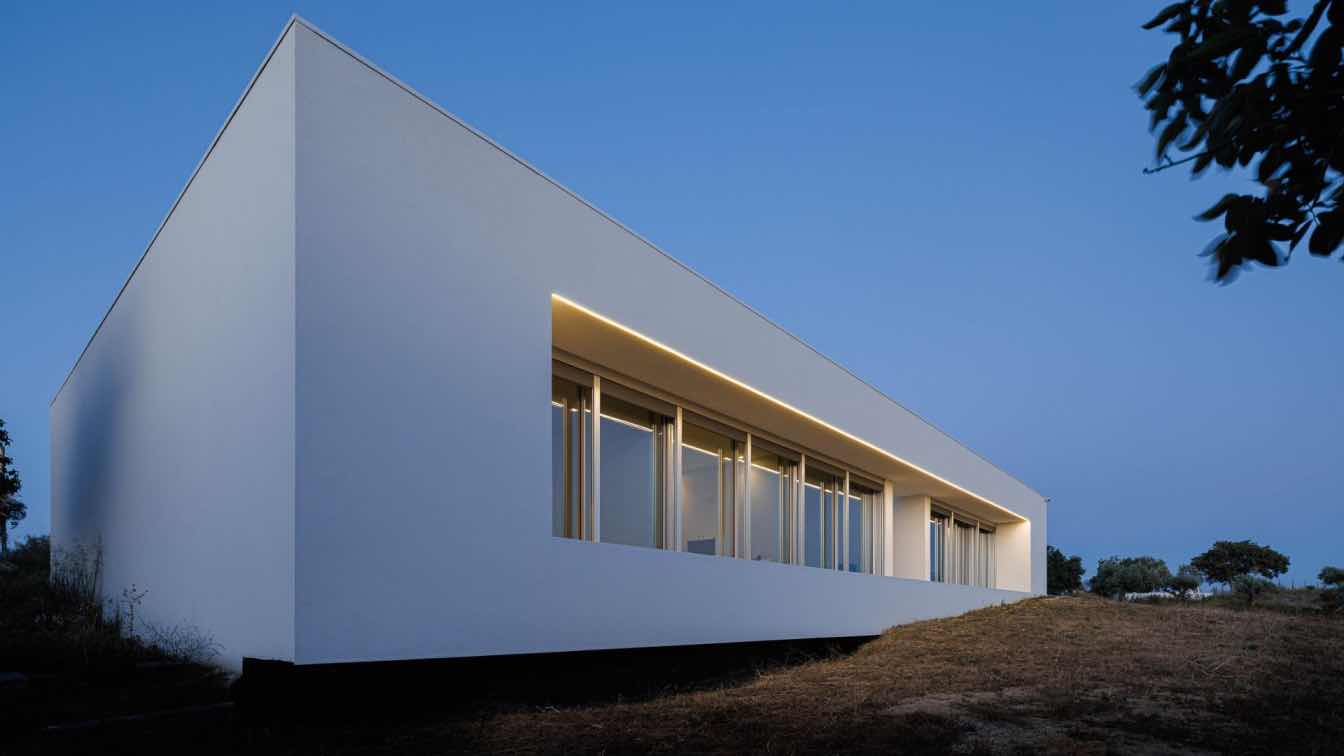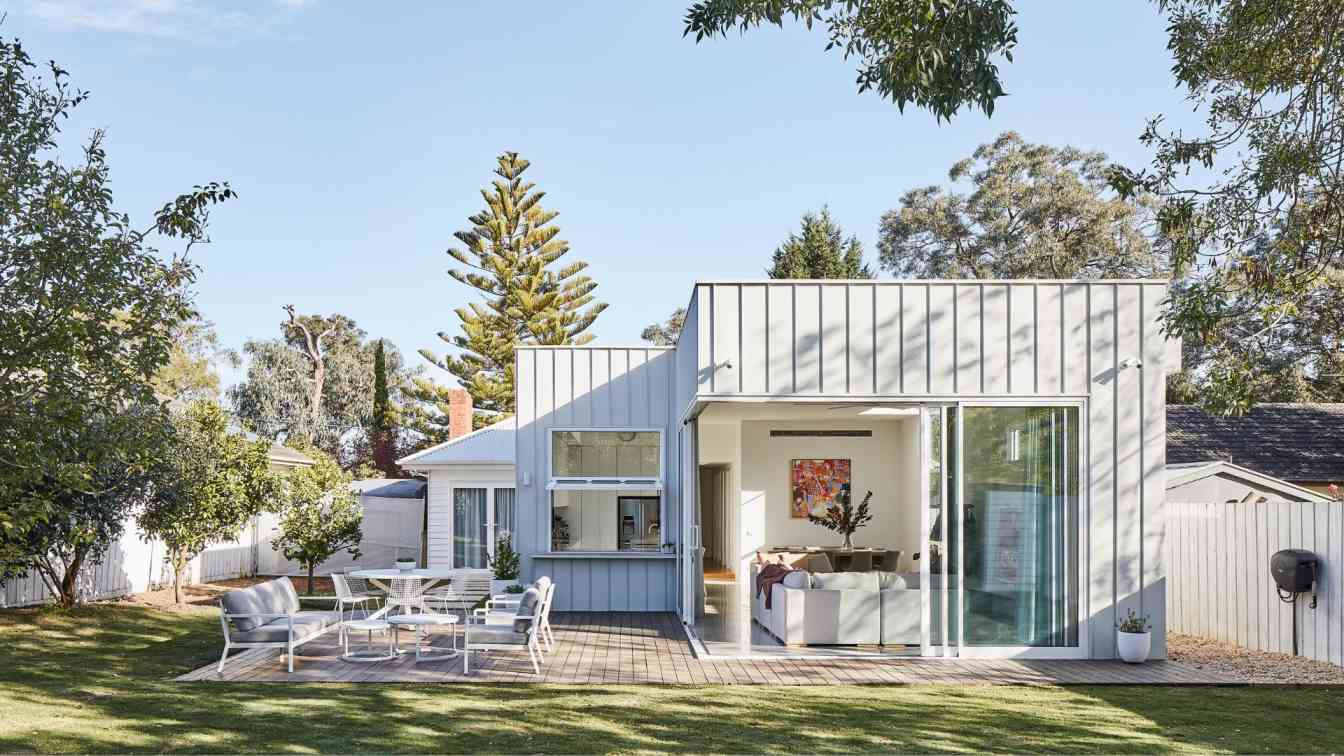Pablo Senmartin Arquitectos: House in the Rodeo, moving blocks. This single-family home is located in the closed neighborhood El Rodeo, La Calera, which is part of a succession of suburban closed neighborhoods located to the west of the city of Córdoba, with the idea of living with greater security and contact with nature, few minutes from the city. The mountain environment that offers stunning views of the city, and steep slopes were strong conditioning factors at the time of designing and building, seeking a balance between caring for the environmental value of the site.
The family: The house is intended for an assembled family, with several members who transit and occupy the house permanently or temporarily, generating a broad and diverse program that also solves the distance to the city, which includes large areas of flexible and integrated social use, rest areas, recreation and leisure areas, work and study areas, health and comfort, services and storage.
Site: The plot is 20 m x 30 m, with a difference in level from the street to the bottom of 7 m and the presence of several native trees on the front, which were preserved in the retreat with the idea of providing the house with protection and environmental quality as well as well as a decrease in its visual impact, in this way, the house occupies the center of the land, through a large block and the stacking of activities.
Basement: Through the movement of the ground, 2 esplanades were generated, one for access on which the house floats and the other that links the main gallery, patio and pool.
Concept: It works on the idea of a pure and solid volume of concrete, which through the action of movement and offset, mutates into 2 superimposed blocks, each one with different programmatic packages. This superimposition allows the appearance of intermediate spaces that protect the fronts of the facades and enhance the interior-exterior interaction, generating galleries, terraces, balconies, etc. both in the façade and in the relationship with the patio. These blocks are then emptied on the inside, allowing fluid and integrating spaces of different heights.
Access: From the street at pedestrian level, a parking area and a semi-buried wine cellar are generated, in a low space and completely made of exposed concrete where we find the vertical circulation that articulates the 3 levels of the house.
On the other hand, the main entrance to the house is raised, which allows it to find its own level on the first level, bridging the gap with a floating concrete staircase that forms a walkway under the trees.

Spatiality: A low, dim and underground space is passed to the triple height of the next level, above the entrance hall and living room, with great entrances of natural light and transparencies obtained in front and back that allow continuous visuals towards the neighborhood and towards the patio provided through vertical wood filters. In this first block, programs for common use are developed, and a law firm as well as the main service areas. The dining room develops longitudinally in relation to an integrated kitchen, next to a pantry, in turn parallel to a rear gallery that overlooks the patio and the barbecue. In the second block and level we can find programs of a more private and individual nature, 2 bedrooms with a large cantilevered terrace over the pool and an en-suite bedroom that contains a dressing room and a bathroom for private use for the couple, a playroom and a area of study complete the program.
Tectonics, the materialization of moving blocks:
This area of La Calera historically is and has been a producer of lime and cement for the construction of the city, so the chosen material responds to this local production.
The house is developed as an independent structure block of reinforced concrete, which allows large projections through inverted reinforced concrete beams, the enclosing walls are covered on the inside and outside by a 5cm plate of reinforced concrete with a soul. ceramic brick, providing a monolithic image with good thermal performance. These material conditions are complemented by the location of wooden filters on the facades, with openings located in a way that allows cross ventilation, and the native vegetation that protects from extreme weather depending on the season of the year, consolidating a unique and natural atmosphere of the house in the rodeo.

































































